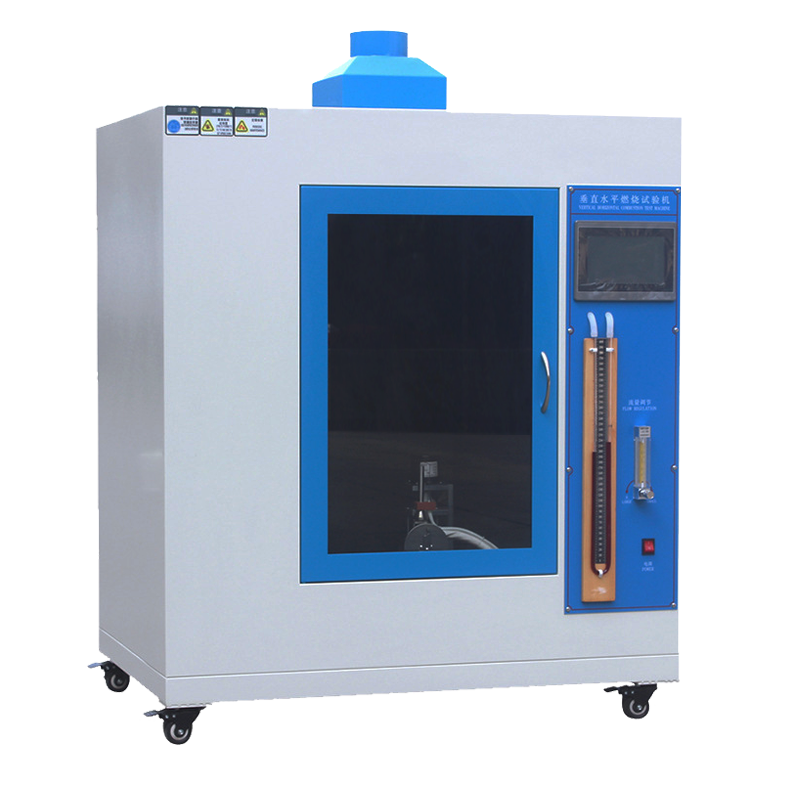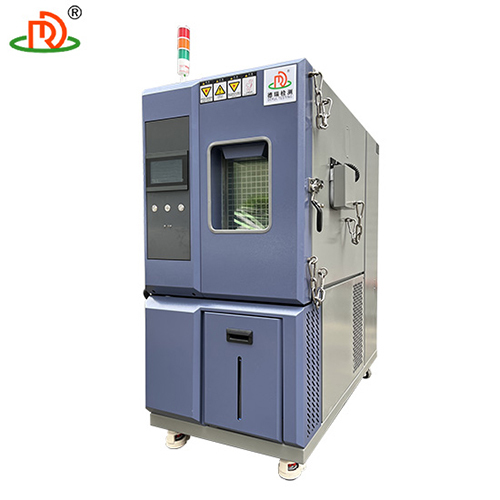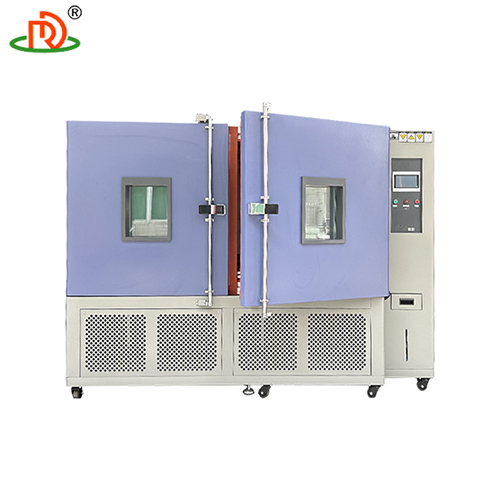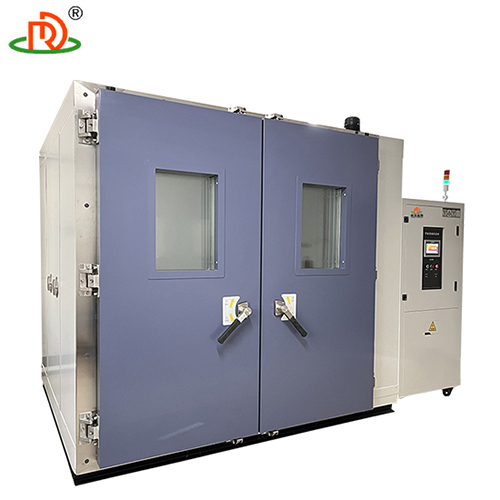Product Description
STANDARD FEATURES
| Burning Chamber Capacity | 0.75m with glass observation door |
| Burning Angle | 20 , 45 , 90 (ie 0 ) adjustable |
| Flame Time | 0 ~ 99 minutes 99 seconds can be set |
| After Flame Time | 0 ~ 99 minutes 99 seconds can be set |
| After Glow Time | 0 ~ 99 minutes 99 seconds can be set |
| Burner Dimensions | The inner diameter of the nozzle is 9.50.3mm, the effective length of the nozzle is 10010mm, and there is an air adjustment hole |
| Combustion Gas | LPG gas (Customize) |
| Flame Height | Adjustable from 20mm to 175mm as standard |
| Features | It is also equipped with lighting device, air extraction device, gas flow regulating valve, gas pressure gauge, gas pressure regulating valve, gas flow meter, gas U-shaped pressure gauge and sample fixture |
| Power | AC 220v 50HZ |
Material combustion testing machine Common Types and Working Principles
There are various types of material combustion testers according to different testing standards and application scenarios, the following are a few common types and their working principles:
1. Horizontal Vertical Combustion Tester (HVUL)
- Purpose: Mainly used to evaluate the flame retardancy of materials such as plastics, rubber, textiles, etc. Principle: The sample is fixed horizontally or vertically.
- Principle: Fix the sample horizontally or vertically, ignite the sample with a prescribed flame, and observe the combustion behavior of the sample, including the burning time, flame spreading speed, and combustion range.
- Standard: UL 94, IEC 60695-11-10, etc. 2.
2. Oxygen Index Tester (LOI)
- Purpose: It is used to determine the lowest oxygen concentration (LOI) of materials in a mixture of oxygen and nitrogen, and to evaluate the flame retardancy of materials. Principle: The sample is placed in a controlled oxygen and nitrogen gas mixture.
- Principle: The sample is ignited in a controlled mixture of oxygen and nitrogen, the oxygen concentration is adjusted until the material is able to burn continuously, and the minimum oxygen concentration is recorded.
- Standards: ASTM D2863, ISO 4589, etc.
3. Burning Wire Testing Machine (GWEPT)
- Purpose: To evaluate the heat resistance and flame retardancy of materials under the action of a high temperature scorch wire. Principle: A scorch wire is heated to the point where the material will burn.
- Principle: The scorch wire is heated to a specified temperature and contacted with the sample to observe the burning behavior of the sample, including the time of ignition, flame duration and burning range.
- Standard: IEC 60695-2-10/11/12, etc. 4.
4. Needle Flame Tester (Needle Flame Tester)
- Purpose: To evaluate the burning performance and flame retardant properties of materials under the action of a needle flame. Principle: The use of a prescribed size and shape of a needle flame tester.
- Principle: Use a needle flame of specified size and shape to ignite the sample and observe the burning behavior of the sample, including burning time, burning range, flame spreading speed, etc.
- Standard: IEC 60695-11-5, etc. 5.
5. Smoke Density Tester (Smoke Density Chamber)
- Purpose: Used to determine the density of smoke produced by the material in the combustion process and to evaluate the smoke production characteristics of the material. Principle: The sample is placed in a closed chamber to measure the density of smoke.
- Principle: The sample is ignited in a closed combustion chamber, and the transmittance of smoke to light is measured by a photocell to calculate the smoke density.
- Standard: ASTM E662, ISO 5659-2, etc.
Equipment Configuration
1. Combustion chamber
- Material: usually made of high temperature and corrosion resistant material, such as stainless steel.
- Size: The size of the combustion chamber varies according to different types of testing machines. For example, the combustion chamber of horizontal vertical combustion tester is usually (500-2000)mm long, (500-1000)mm wide and (500-1000)mm high.
- Observation Window: Equipped with a high temperature resistant glass observation window for easy observation of the combustion behavior of the sample.
- Exhaust system: Equipped with an efficient exhaust system for removing smoke and gas generated by combustion to ensure the cleanliness and safety of the test environment.
2. Ignition device
- Types: Ignition devices vary depending on the type of test. For example, horizontal and vertical combustion testers usually use a gas flame (e.g. propane), while needle flame testers use a needle flame.
- Flame size and temperature: Flame size and temperature should comply with the relevant standards. For example, needle flame tester needle flame size is usually 12mm 1mm, flame height of 12mm 1mm, temperature of 1000 50 .
- Control device: equipped with precise flame control device, able to adjust the size, time and intensity of the flame.
3. Sample fixture
- Material: usually made of high temperature and corrosion resistant materials, such as stainless steel.
- Design: The design of the sample fixture varies according to different types of tests. For example, the sample fixture of a horizontal-vertical combustion tester should be able to hold the sample in a horizontal or vertical position.
- Adjustment function: The sample fixture should have an adjustment function, which can be adjusted according to the size and shape of different samples.
4. Temperature measurement system
- Sensor: Equipped with high-precision temperature sensors, such as K-type thermocouples, to measure the flame temperature and sample surface temperature.
- Accuracy: Temperature measurement accuracy is usually 1.
- Data Recording: Equipped with data recording device, capable of recording and displaying the temperature change curve in real time.
5. Oxygen concentration control system (applicable to oxygen index tester)
- Gas mixing device: equipped with oxygen and nitrogen mixing device, able to accurately control the oxygen concentration of the mixed gas.
- Concentration range: the range of oxygen concentration is usually 0-100%, adjustable, with an accuracy of 1%.
- Sensor: equipped with oxygen concentration sensor, real-time monitoring and control of oxygen concentration.
6. Smoke Density Measurement System (for smoke density tester)
- Light source and detector: equipped with light source and photocell, used to measure the transmission rate of smoke to light.
- Measuring range: Smoke density measuring range is usually 0-100%.
- Data Recording: Equipped with data recording device, which can record and display the curve of smoke density change in real time.
7. Safety devices
- Flame monitor: real-time monitoring of the flame status to ensure flame stability.
- Overheating protector: prevent the equipment from overheating, avoiding damage to the instrument and samples.
- Emergency stop button: stop the test immediately in case of emergency to ensure the safety of operation.
- Explosion-proof device: prevent excessive pressure inside the combustion chamber to avoid explosion and other dangerous situations.
8. Control system
- Microprocessor: Built-in microprocessor, capable of automatically controlling the test process, including ignition, timing, stopping and so on.
- Human-machine interface: equipped with a touch screen or control panel, which is convenient for the operator to set parameters and test control.
- Data processing: capable of automatic data processing and result calculation, and can be connected to a computer for data storage and analysis.
Working conditions
1. Ambient temperature
- Range: usually required between 15-30.
- Stability: The ambient temperature should be kept stable to avoid temperature fluctuation affecting the test results.
2. Relative humidity
- Range: usually less than 80%.
- Control: If necessary, dehumidification device can be equipped to control the humidity of the test environment.
3. Ventilation conditions
- Requirements: The testing machine should be placed in a well-ventilated environment to avoid the accumulation of smoke and gas from combustion.
- Exhaust system: Equipped with an efficient exhaust system to ensure the cleanliness and safety of the test environment.
4. Power supply
- Voltage: AC 220V or AC 380V, depending on the model.
- Frequency: Normally 50Hz or 60Hz.
- Power: according to different models, the power varies, usually 1-5kW.
5. Gas supply (for testing machines using gas)
- Gas type: Propane or natural gas is normally used.
- Gas pressure: gas pressure should meet the requirements of the equipment, usually 0.1-0.3MPa.
- Gas piping: Equipped with safe gas piping and valves to ensure stable and safe gas supply.
6. Safety measures
- Operator: The operator should be professionally trained and familiar with the operating procedures and safety precautions of the instrument.
- Protective equipment: Operators should wear necessary protective equipment, such as protective glasses and gloves.
- Emergency plan: An emergency plan should be formulated to ensure that measures can be taken quickly in case of accidents.










 English
English Spanish
Spanish French
French German
German Italian
Italian Chinese (Simplified)
Chinese (Simplified) Japanese
Japanese Korean
Korean Arabic
Arabic Portuguese
Portuguese